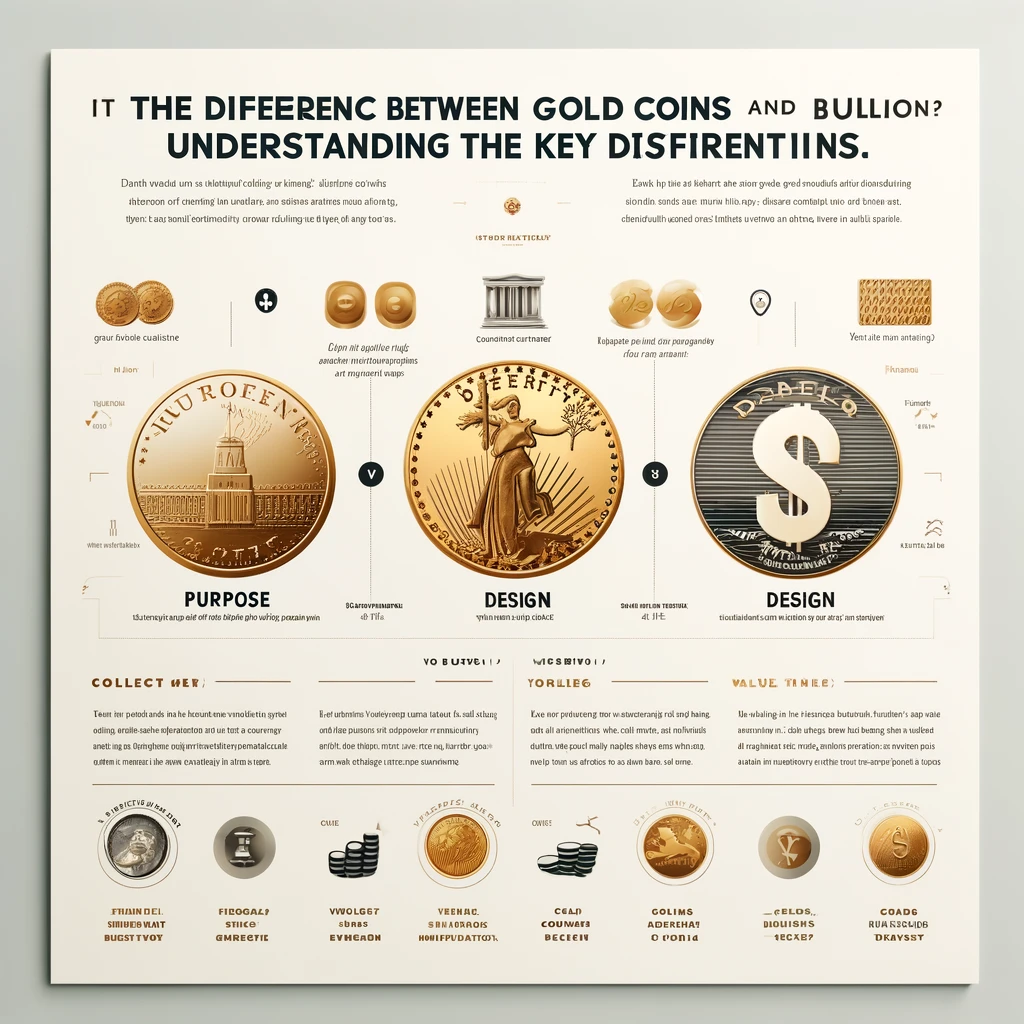Difference Between Gold Coins and Bullion: Understanding the Key Distinctions
Gold is a trusted form of investment, but there’s often confusion between gold coins and gold bullion. While both contain valuable gold, they serve different purposes. In this short guide, we’ll break down the essential differences so you can make informed investment decisions.
1. Purpose of Gold Coins vs. Bullion
- Gold Coins: These are often minted as both a collectible and investment. Collectors value their historical and aesthetic appeal, while investors appreciate their long-term value.
- Gold Bullion: Bullion is designed purely for investment. It’s valued based on its gold content and is often purchased by investors looking to store wealth in gold.
2. Design and Appearance
- Gold Coins: Coins feature intricate designs, often commemorating events or figures. They are attractive to collectors and can hold artistic value.
- Gold Bullion: Bullion typically has a simpler design, emphasizing weight and gold purity over aesthetic appeal. It’s produced in bars or rounds for easier stacking and storage.
3. Value Differences
- Gold Coins: Their value depends on more than just gold content. Rarity, age, condition, and historical significance can greatly increase a coin’s worth.
- Gold Bullion: Bullion’s value is tied strictly to the current gold market price and its weight. There’s no additional numismatic value.
4. Market for Trading
- Gold Coins: Coins appeal to both collectors and investors. Their value fluctuates based on numismatic factors and gold prices, but they often have a broader market.
- Gold Bullion: Bullion is purely for investment, making it easier to trade based solely on its gold content. Investors often prefer it for fast liquidity.
Conclusion
Both gold coins and bullion are excellent investments but serve different needs. If you appreciate historical value and aesthetic appeal, gold coins might be the right choice. If you’re focused on gold’s intrinsic value and investment potential, gold bullion is a straightforward option.
Understanding these distinctions helps you choose the right form of gold for your investment goals.








